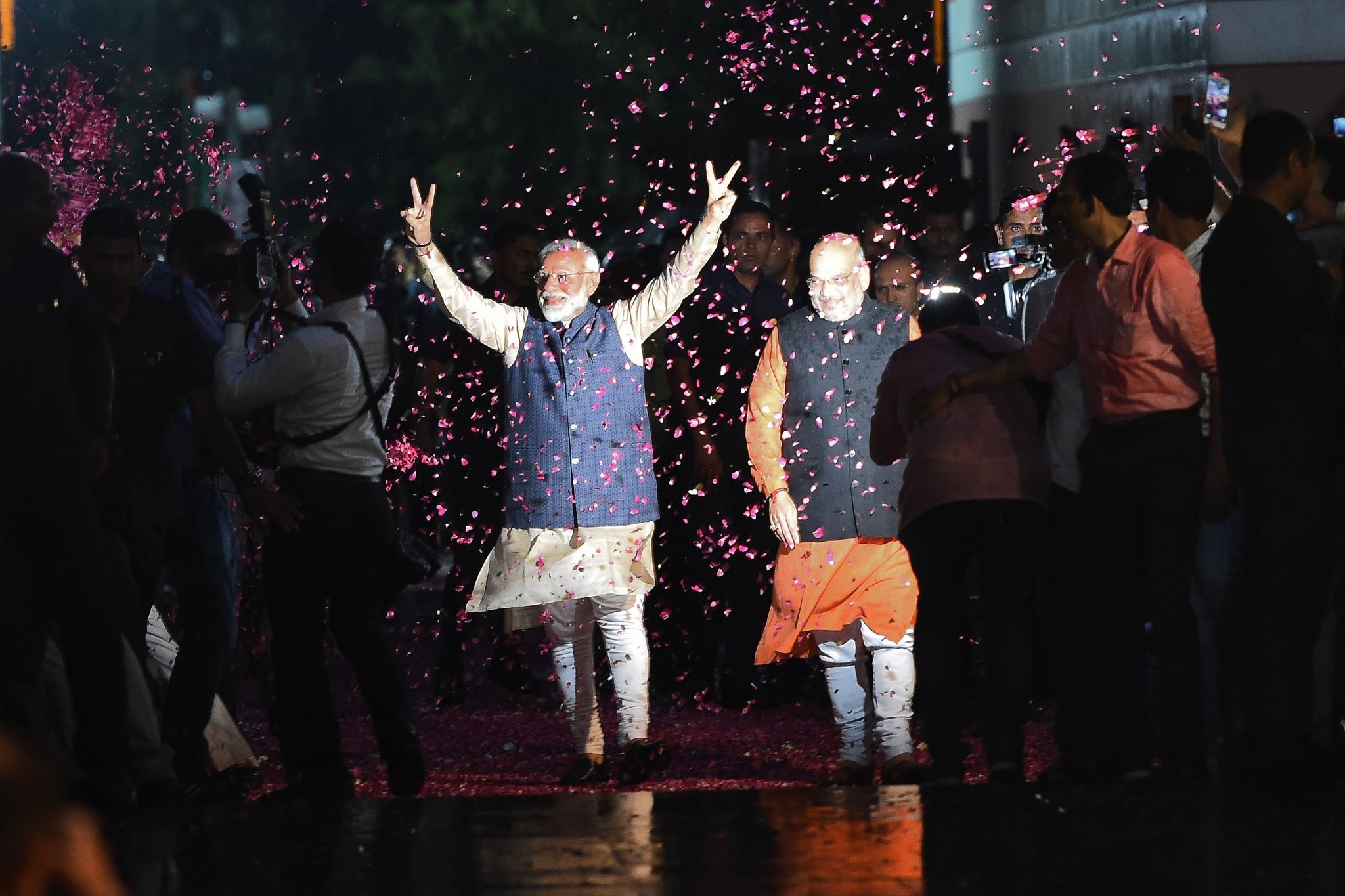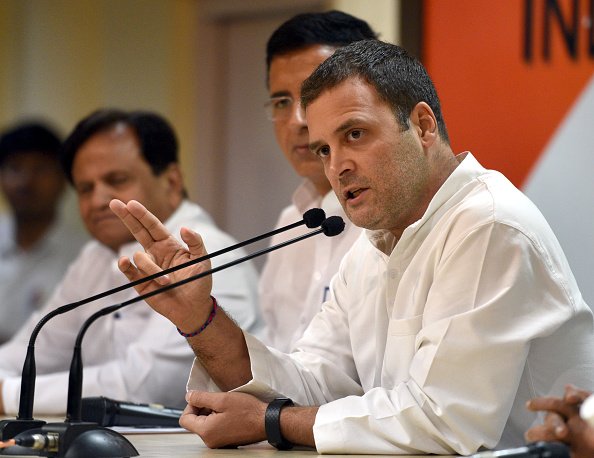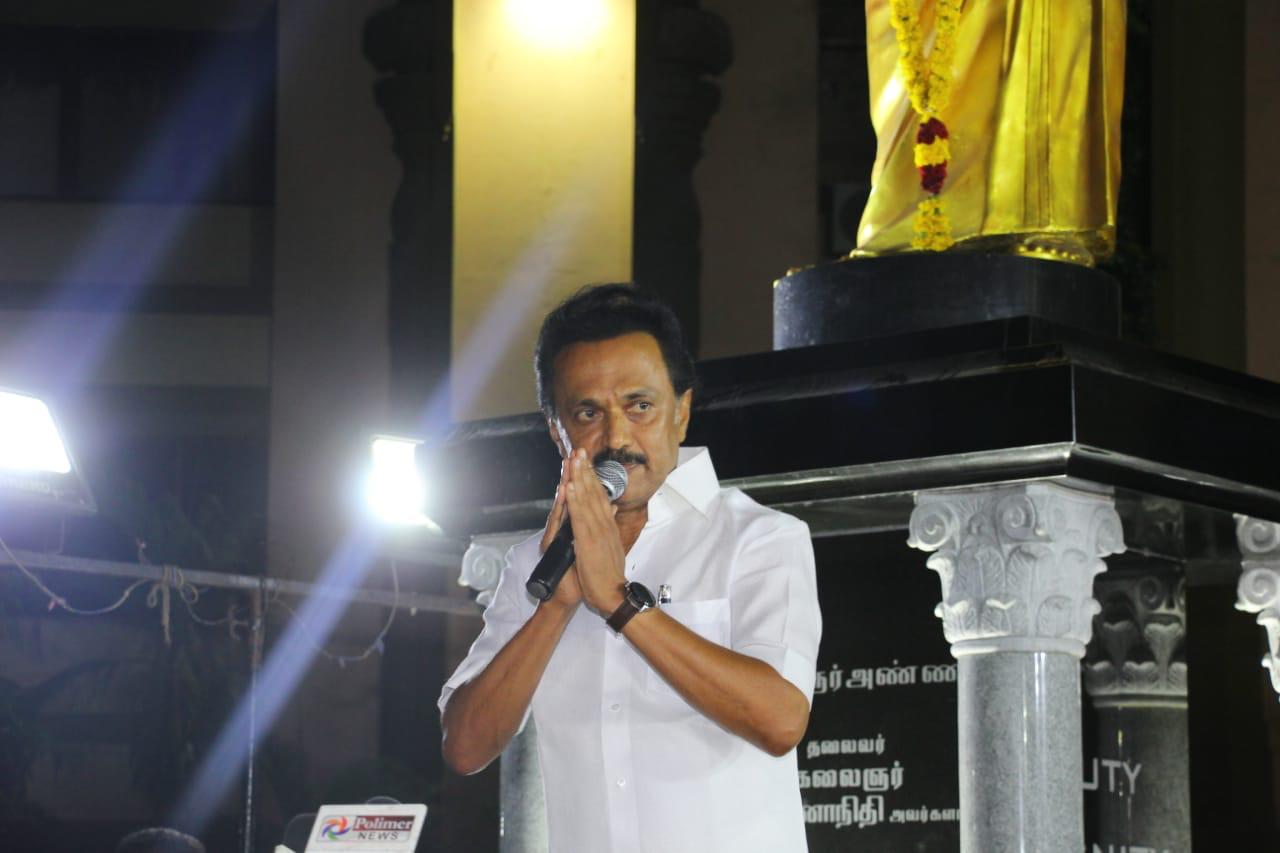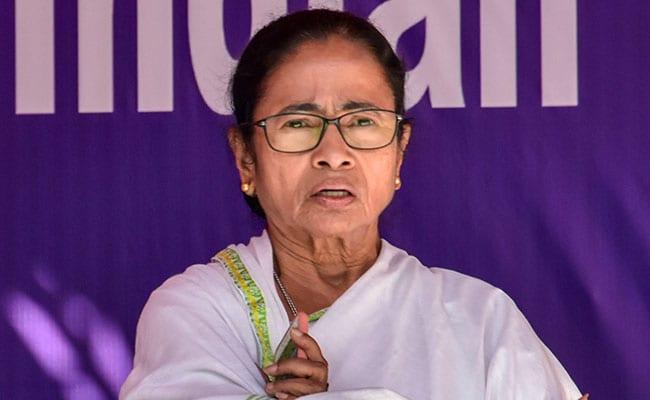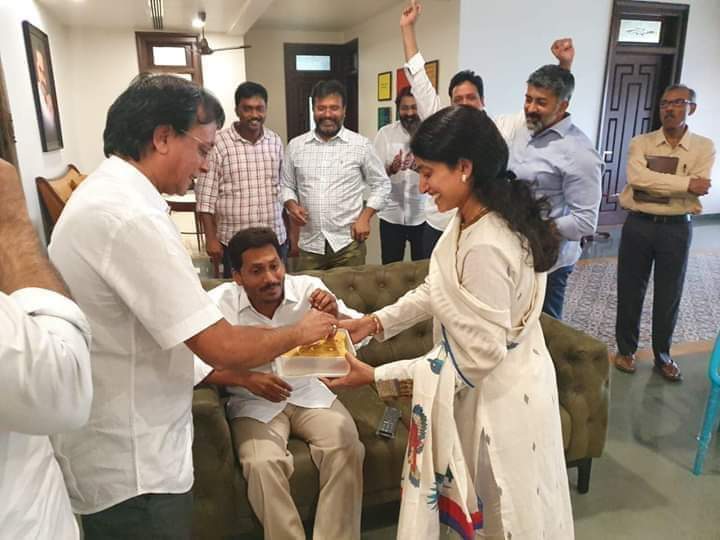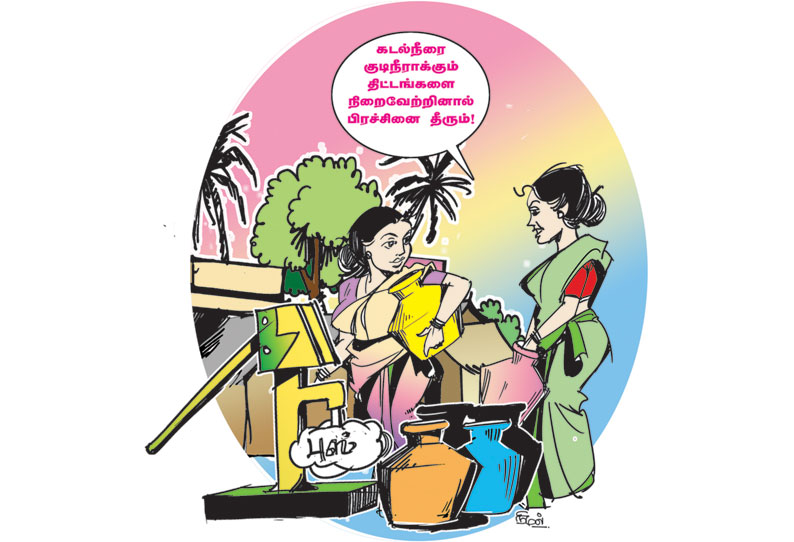FIVE MEN AT A CROSSROADS
While Stalin Marked His First Big Success In Tamil Nadu Politics After The Demise Of M Karunanidhi, EPS Saved His Government Yet Again; New Aspirants And Breakaways, However, Bit The Dust
STALIN COMES INTO HIS OWN, STOPS MODI WAVE
Jayaraj.Sivan@timesgroup.com
DMK president M K Stalin can claim credit for putting the brakes on the Modi juggernaut in Tamil Nadu. The DMK-led front’s victory is the culmination of a two-and-a-half-year anti-Modi, anti-BJP campaign designed and executed by Stalin after the demonetisation exercise in November 2016.
Stalin started the groundwork way back in 2014. Immediately after the BJP’s victory in the 2014 Lok Sabha polls, Stalin took a leaf from Prime Minister Narendra Modi’s own book and engaged a professional agency to assist him in strategizing and executing programmes. In fact, he hired someone from Prashant Kishore’s team, which had worked for Modi in 2014.
Stalin started off with a mass contact programme, travelling across the state over a one-year period, covering each and every assembly segment, meeting people from various walks of life, rubbing shoulders with loadmen, autorickshaw drivers and weavers, and sipping tea at wayside tea shops and engaging in small talk with villagers. He was rediscovering himself. The campaign was an instant hit and a new leader was born in Tamil Nadu. He waited for four more years to formally take over the reins of the party from his father – after his demise.
After getting his father to oust his older brother M K Alagiri from the party, Stalin consolidated his position, without showing any hurry. Today, he is the undisputed leader of the DMK and the most popular politician in Tamil Nadu.
Stalin’s equation with the Congress leadership was not all that great till he became the DMK president. The wedge kept widening as Rahul avoided calling on an ailing Karunanidhi during his earlier visits to Chennai. Stalin struck when it really hurt the Congress by shooting down the idea of a DMK-Congress alliance in the 2014 Lok Sabha polls.
After the parties revived ties in the 2016 assembly elections, things looked better for both, and, more importantly, Stalin managed to develop a rapport with Rahul. In the runup to the present Lok Sabha polls, Stalin projected Rahul as the front’s Prime Minister candidate when no other opposition leaders were ready to throw their weight behind him. Stalin, in no time, discovered a new chemistry with Rahul. He is looking at him as a partner to do business with in the long run. Today, he also rubs shoulders with other national leaders, most of whom have lost in the turf war with the BJP. For Stalin, it is an investment for future.
EPS, CHIEF MINISTER IN HIS OWN RIGHT NOW
Jaya.Menon@timesgroup.com
On February 12, 2017, hours before a crucial Supreme Court verdict in the disproportionate assets case, nearly 120 AIADMK MLAs huddled together in the Koovathur resort on the outskirts of Chennai. Amidst high drama and nail-biting suspense, a new successor was anointed. The choice had been near unanimous and no surprise.
Overnight, Edappadi Karuppa Gounder Palaniswami, erstwhile Salem chieftain and J Jayalalithaa’s trusted trouble-shooter, who played his cards close to his chest, rose in stature. A few months after passing a floor test, he tossed aside his ‘bullying’ benefactors, V K Sasikala and her nephew T T V Dhinakaran, mended fences with O Panneerselvam-led rebels, won the grudging approval of the Narendra Modi dispensation and never forgot to be grateful to his ‘puratchi thalaivi Amma’.
Last year, 18 MLAs rebelled against him, shifting loyalties to Dhinakaran. At stake was his leadership, which he had earned by accident – by the death of his leader and conviction of his de-facto leader. As he plodded on, quietly diluting the administrative powers of OPS, clipping his political wings by putting in place a dual leadership in the AIADMK’s organizational structure, Palaniswami had become virtually invincible.
Every time his leadership took a hard beating, like when TTV won the R K Nagar by-election in December 2017, he plodded on “in the path shown by Amma” to fulfill a mandate on lease. Whenever his grip loosened on the reins, like when 18 MLAs switched allegiance to TTV and met the governor to express lack of confidence in him, he bounced back to grip them tighter.
Miscalculation in ordering the firing at anti-Sterlite protestors, bowing to the Centre’s pressure against NEET exemption for TN, corruption charges against him and his family members were all shrugged off as his government took cover behind the Modi regime.
Now, as EPS prepares for yet another floor test, quick calculations indicate that his party with 117 members in the state legislative assembly, excluding the speaker, is on a stronger wicket than it was a month ago. EPS is back, shaken by DMK’s sweep in the Lok Sabha polls, but determined to stay in his chair.
The AIADMK’s alliance with the BJP may have been a bad move. But, with Narendra Modi, firmly inthe saddle, EPS gets to keep his godfather.
THIS MANGO TASTES A BIT SOUR
Shanmughasundaram.J@timesgroup.com
Anbumani Ramadoss, the 50-year-old chief of the PMK’s youth wing, has a mountain to climb. His defeat in Dharmapuri leaves him and his party struggling for relevance after driving a hard bargain with the AIADMK for seven seats and losing them all.
The tragedy for Anbumani is that he never wanted to ally with the AIADMK and the BJP, but was railroaded into it by his father and party founder S Ramadoss. In fact, Anbumani was the butt of memes after he tied up with the AIADMK after calling chief minister Edappadi K Palaniswami names and accusing him of running a benami government for the BJP.
Anbumani wants to be chief minister and his party contested the 2016 assembly elections on its own, but did not win a seat. But he did not give up, continuing to ridicule EPS-OPS and their cabinet colleagues saying “what do they know about administration and management?” He even projected his party as an alternative to the Dravidian outfits, while his father vowed the PMK would never align with either DMK or AIADMK.
However, they did a volte-face and inked an electoral pact with AIADMK-BJP for the parliament polls. Justifying the change in strategy of the party, Anbumani openly admitted that people did not give a chance for PMK in 2009, 2011, 2014 and 2016 elections. Anbumani, who had salvaged some pride for the PMK by winning in Dharmpuri in 2014 in the face of the Jayalalithaa wave, was hard-pressed to justify the change in stance.
The defeat now of all its candidates will demoralize further the party cadres, who have had no taste of power for years now and were not ready to stomach the PMK leadership’s decision to align with the AIADMK-BJP. A few functionaries had criticized the decision openly and resigned from party posts. This defeat could see a bigger exodus from the PMK.
The second line leaders may leave for better political prospects. A sizeable number of followers of J Gurunathan alias Kaduvettai Guru in the northern districts had already parted away with the PMK after his demise. The party claim of commanding 5% to 6 % of the vote bank in their strongholds that spread over the northern and western parts of the state could also take a hit.
Anbumani’s ambitions of emerging as the alternative in Tamil Nadu stand in jeopardy. His first challenge will be to keep the party flock together. He will have to go back to the drawing board to come up with a plan for the Assembly elections that a just two years away.
KAMAL TOILED IN VILLAGES, REAPED HARVEST IN CITIES
TIMES NEWS NETWORK
After the last of the 2019 poll wagons had fallen silent, Kamal Haasan told TOI: “Political analysts say if we get 5% votes, we’re in the game. I think we will cross the 10% mark.”
Going by the early numbers, MNM seems to have found a place closer to the analysts’ projection than its founder’s self-assessment. While information on parties’ exact vote share will have to wait, there is something unmissable about MNM: It has struck a chord in the cities.
In Coimbatore, 1.4 lakh votes were counted in favour of MNM candidate Mahendran (at 9pm). In South Chennai and North Chennai it crossed 1 lakh, while in Central Chennai and Sriperumbudur, the party’s candidates were inching towards the milestone. In all these constituencies, MNM had come third. In the hinterland, though, the party failed to reap a decent harvest (in Karur, it polled a little less than 16,000; in Sivaganga, about 23,000).
This isn’t a surprise, as Kamal, right from the time he announced his party, was seen as an urban promise with limited rural reach. So, it must be intentional that the actor-politician sweated it out more in the villages than in the cities. His angst at the “corrupt and unjust” system found a resonance among urbanites who love to crib yet do little about it. In him they found a medium and a message— and a glamourous one at that. This also shows that the lessons he took from AAP’s urban-centric leader Arvind Kejriwal have worked.
For Kamal, the 2019 elections is a dress rehearsal for the 2021 assembly polls. And, for someone with no delusions of winning a seat this time, the results shouldn’t be a disappointment. But, to match his Fort St George ambition, he has a long, hard way through the turf where the Dravidian banyans have struck deep roots.
For starters, Kamal, who has donned ten roles in a movie, has to change the way he communicates with different masses. Electoral dividends come from toil and tact. Kamal has done the hard work; now he has to do the smart work. And deep pockets help.
REBEL LEFT OUT IN THE COLD
D.Govardan@timesgroup.com
“He will get votes, but not seats” was the common reprieve one heard over the past two months about T T V Dhinakaran, the self-designated general secretary of the fledgling Amma Makkal Munnetra Kazhagam (AMMK) he founded in March 2018.
It proved true on Thursday, with the AMMK a distant third in several constituencies and behind Kamal Haasan’s MNM and Seeman’s Naam Tamizhar Katchi (NTK) in several others.
“We will win 33 of the 38 Lok Sabha seats and 20 of 22 assembly bypolls,” Dhinakaran had told, without batting an eyelid, a Tamil news channel. He was ‘confidence personified’, but, his opponents felt it was ‘overconfidence’.
But, that’s how Dhinakaran won the RK Nagar assembly bypoll in December 2017, as an independent. He has continued to battle the political odds since then, including see 18 ruling party MLAs disqualified for siding with him. TTV struggled for a common symbol and the day he began the campaign for the Lok Sabha and assembly bypolls, his party did not even have a symbol. Just two days later, EC allotted the ‘gift pack’ symbol.
That was not all, TTV had to battle his own popular symbol Pressure Cooker, with which he won from R K Nagar, which was now allotted to other independents, even as AMMK’s candidates too were categorized as independents and left to fight for voters’ recognition at the bottom of the EVMs.
TTV may have had his mind on vote share, if not seats. At a time when the AIADMK and DMK were scurrying for alliances and ended up contesting in just 20 Lok Sabha seats each, AMMK put up candidates in 39 of 40 seats, leaving one seat for its ally SDPI, with an eye on minority votes.
Claiming that safeguarding state’s interests was his main interest, he attacked AIADMK for surrendering to BJP and the DMK for having done little for the state despite being part of the government at the Centre for long. He even tried to prevent minority votes from going to DMK-Congress alliance in a bid to replicate Jayalalithaa’s 2014 Lok Sabha polls performance.
The AIADMK even chided Dhinakaran for imagining he was Amma (Jayalalithaa). In the end, it was proved right, as AMMK candidates polled votes way short of being called decent. TTV and his party were clearly caught between a surging anti-Modi wave and the AIADMK’s desire to stay in power – and paid heavily.

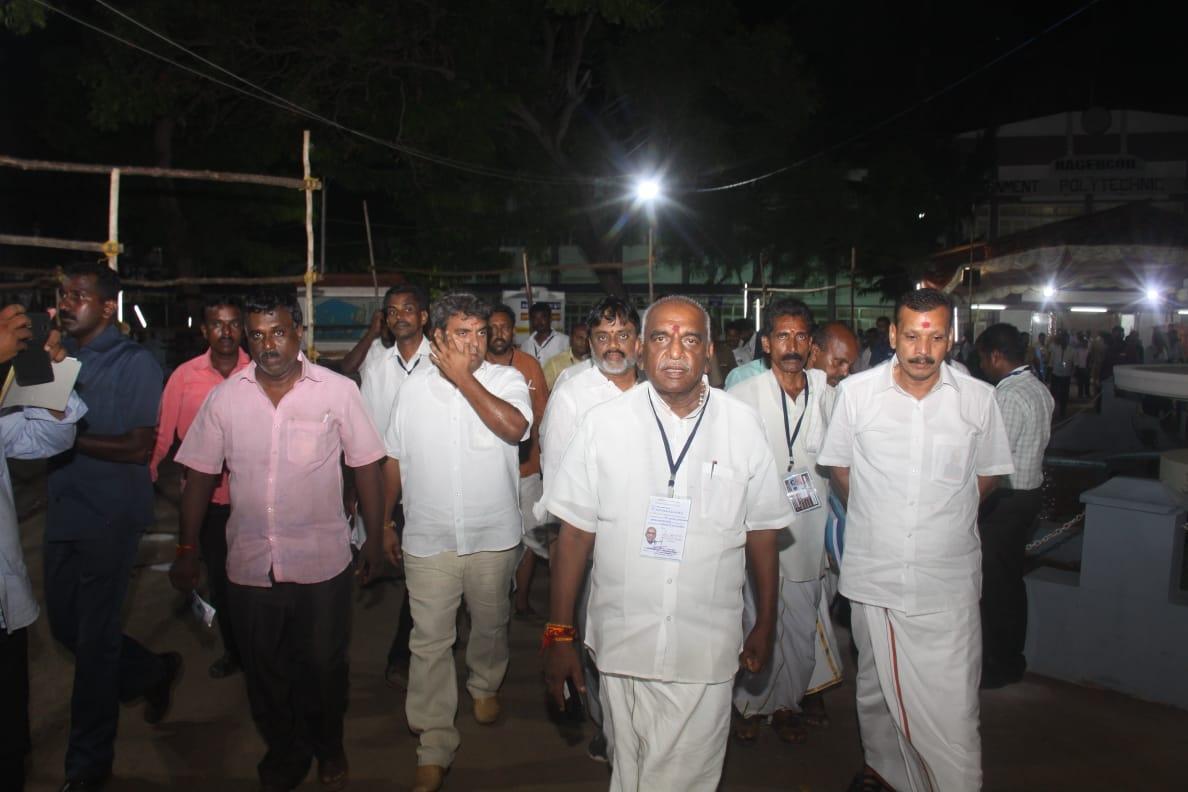

 மலையரசு
மலையரசு 